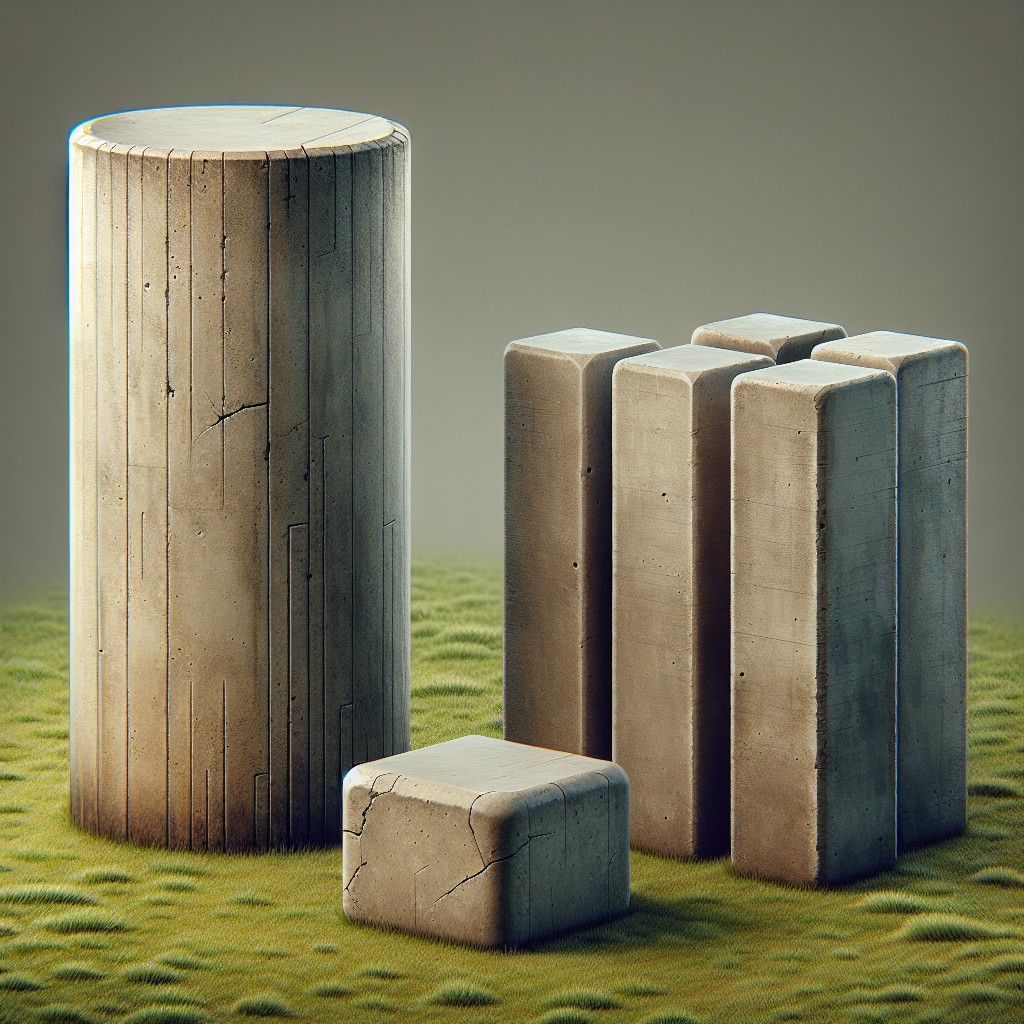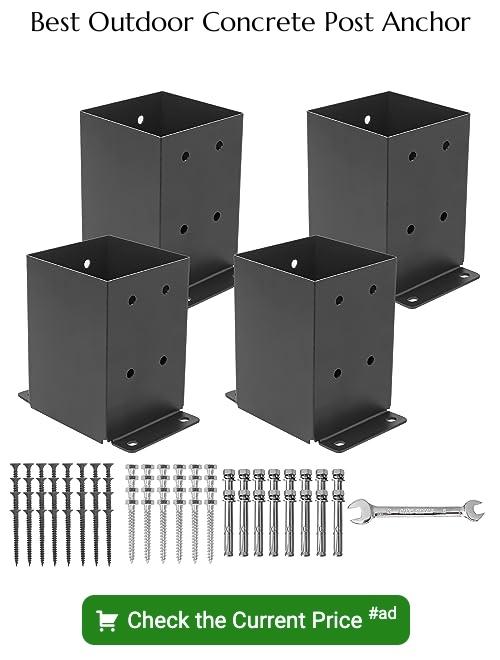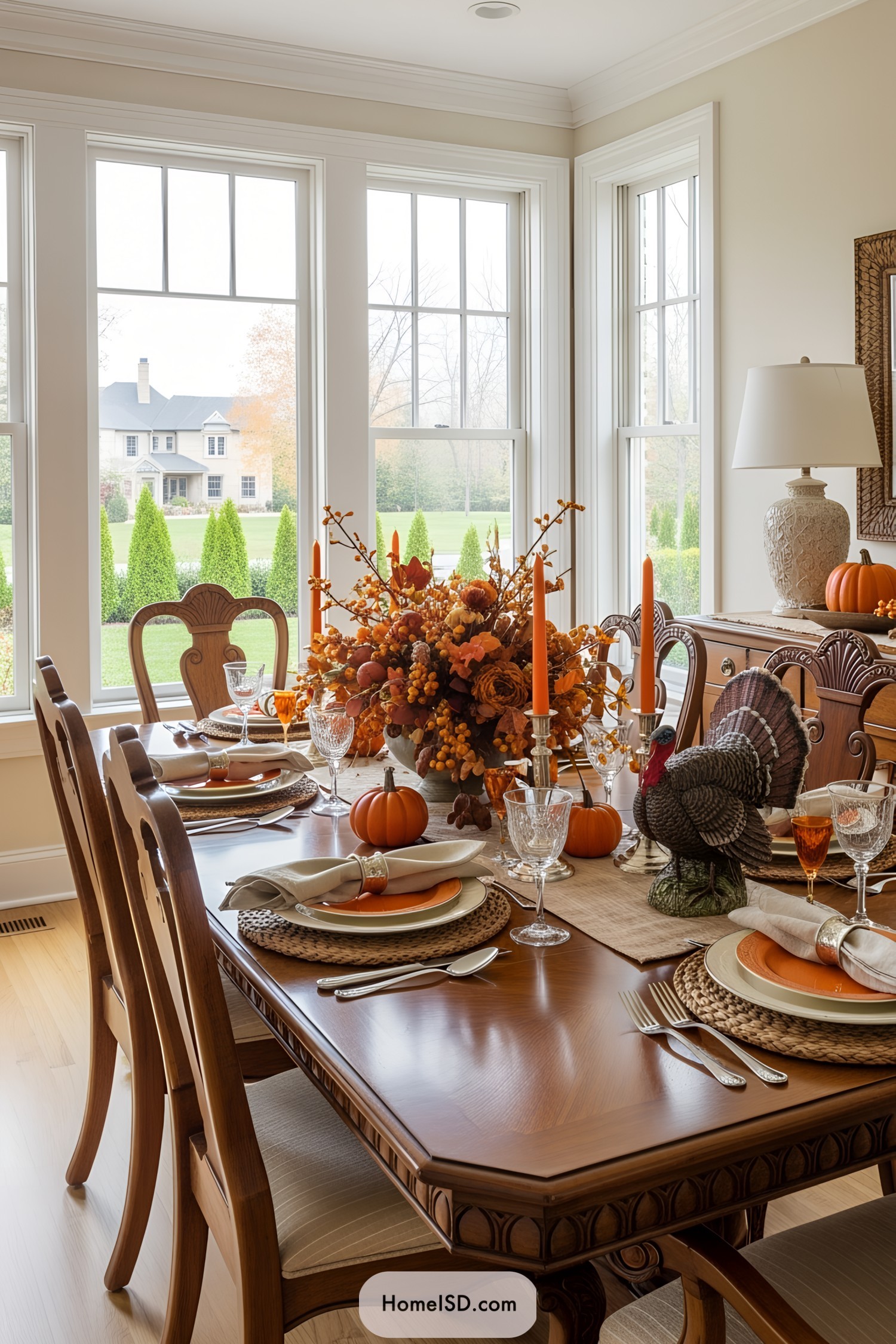Last updated on
Dive into this comprehensive guide to understand how to pick the right concrete posts for your project and learn the steps to use them effectively.
Key takeaways:
- Concrete posts come in different types (structural, lightweight, slotted, decorative, eco-friendly).
- Precast concrete posts offer strength, consistency, fire resistance, and low maintenance.
- The manufacturing process involves molds, reinforcement, vibration, curing, and quality control.
- Proper installation involves digging a hole, adding gravel for drainage, positioning the post, pouring concrete, curing, and filling with soil or gravel.
- Concrete posts are durable, require minimal maintenance, and can be customized for various applications.
Types of Concrete Posts

Concrete posts come in a variety of shapes and sizes to suit different applications. For structural support, reinforced concrete posts with steel bars are common, providing increased strength and durability. Lightweight posts, on the other hand, are designed for easier handling and installation, suited for applications where heavy-duty support is not required.
In terms of utility, some posts feature predrilled holes or grooves to accommodate fencing or wiring, streamlining the installation process. Slotted concrete posts are especially popular for panel fencing, seamlessly accepting fence panels without additional fixings.
When aesthetics are a concern, decorative concrete posts are available, which include elements like ornate molds and textures that mimic the look of natural stone or timber. These posts enhance visual appeal for property perimeters and landscaping features.
Lastly, for those seeking sustainability, eco-friendly concrete posts are made using recycled materials, catering to environmentally conscious designs.
Each type caters to specific needs, be it structural integrity, ease of use, visual enhancement, or eco-friendliness, ensuring there’s a concrete post solution for every project.
Benefits of Precast Concrete Posts

Precast concrete posts offer unparalleled strength and longevity, surpassing many alternative materials. They withstand weather extremes and pest damage, providing reliable structural support for years.
The controlled factory setting in which they are produced ensures consistent quality and uniform appearance. Pre-fabricated before arriving at the construction site, they save time and reduce on-site labor.
Their innate fire resistance adds a layer of safety to structures, while the potential for incorporating recycled materials during manufacturing appeals to eco-conscious individuals.
Furthermore, these posts require minimal upkeep, eliminating the need for regular treatments or repairs. By choosing precast concrete options, consumers invest in a robust, low-maintenance solution that delivers both performance and peace of mind.
Manufacturing Process of Precast Concrete Posts
The manufacturing of precast concrete posts begins with the creation of molds which are designed to the specifications of the intended product. High-quality concrete is mixed with water, cement, aggregates, and any necessary admixtures. This mixture is poured into the molds and reinforced with steel rods or bars to enhance strength, particularly for load-bearing posts.
Vibration is applied to ensure the concrete settles into the mold without air pockets, which can compromise structural integrity. After pouring, the concrete must cure. Controlled environments are often used to maintain optimal temperature and humidity for this process, ensuring a consistent cure and preventing cracks or weaknesses.
Once the curing process is complete, the posts are carefully removed from the molds. They undergo quality control checks to ensure they meet the required standards. Posts that pass inspection are then stored in a designated area until they are ready for transportation to their installation site.
Each step in the process is crucial to ensuring the final product is durable and fit for its intended use, whether for fencing, signage, or structural support.
Installation of Concrete Posts
To ensure a solid foundation, dig a hole that is three times the width of the post and one-third as deep as the height of the post above ground. This ratio provides stability against both vertical forces and lateral ground movement. For added support in loose or sandy soils, consider enlarging the hole or using a concrete anchor at the base.
Before placing the post, add gravel to the bottom of the hole for drainage, usually about 6 inches deep. This layer prevents water from pooling at the base of the post, which can lead to deterioration over time.
Position the post in the center of the hole, using a level to confirm it’s perfectly vertical. Brace the post with wooden stakes or metal supports if needed, to maintain its position as the concrete sets.
Mix the concrete according to the manufacturer’s instructions, aiming for a consistency that is pourable yet not too wet to avoid undermining the post’s stability. Pour the concrete around the post, stopping a few inches from the ground level to allow for topsoil or landscaping details.
After pouring, remove any air pockets by gently poking the mix with a stick or shaking the post. This process ensures that the concrete surrounds the entire post without voids that could compromise its integrity.
Allow the concrete to cure for the time specified by the manufacturer. Prematurely loading the post with weight or stress can affect the post’s longevity and stability.
Keep the concrete moist during the curing process to prevent cracking due to too rapid drying, especially in hot or windy weather. A gradual cure strengthens the final bond between the post and its concrete foundation.
Once the concrete sets, fill the remaining space with soil or gravel, depending on the desired landscaping finish. This last step ensures a clean look and additional lateral support.
Maintenance and Durability of Concrete Posts
Concrete posts boast exceptional longevity, often outlasting other materials such as wood or metal which are susceptible to rot or rust. Their resilience stems from concrete’s inherent properties—the material is virtually impervious to fire, pests, and rot, ensuring that these posts remain steadfast in various conditions.
To preserve their appearance and structural integrity, an occasional inspection is recommended. Look for cracks or chips that could allow moisture penetration, potentially leading to internal reinforcement corrosion. If any damage is spotted, timely repairs with a suitable concrete patching compound can prevent further deterioration.
While maintenance requirements are minimal, keeping vegetation clear from the post bases will discourage excess moisture and potential freeze-thaw cycles that can cause cracking. There is no need for regular painting or staining, unless for aesthetic preferences or to match a specific design scheme.
In areas with extreme weather, it’s worth noting that concrete can expand or contract. Reinforced concrete, however, by incorporating steel bars or mesh, minimizes these effects, adding to the posts’ stability and ensuring they remain a durable choice for many years.
Concrete Posts for Fencing
Selecting the right material for your fencing is crucial, and concrete offers several advantages. Unlike wood or metal, which can rot or rust, concrete withstands the elements remarkably well, ensuring long-term stability and reducing the need for frequent replacements.
Its inherent strength also supports heavier loads, making it ideal for areas with high winds or for supporting robust fences. When it comes to aesthetics, concrete can be molded and textured to resemble other materials, providing both function and style.
Installation is straightforward, involving digging a hole, positioning the post, and pouring in concrete for a secure anchor. Furthermore, concrete posts are impervious to pests, eliminating concerns about termites or other wood-loving insects.
For customization, they can be painted or stained to match any landscape design, blending seamlessly into a variety of settings.
Decorative Concrete Posts
Marrying aesthetics with strength, decorative options elevate the basic function of support to an artful presence in a space. When considering these ornamental pillars, you’ll find structures engraved with intricate patterns or stamped with designs that mimic the natural texture of stone or wood.
These posts can be stained or colored during the manufacturing process, providing a spectrum of hues that can harmonize with any landscape or architectural theme.
To incorporate lighting elements, some are crafted with hollow channels, allowing for electrical wiring to run inside the post, seamlessly blending functionality with style.
Often used as gate or porch supports, these posts can also serve as standalone features, with the ability to anchor garden sculptures or signage.
Moreover, advances in molding technology enable custom designs, offering limitless potential for personalization or branding purposes.
Whether it is a classic fluted column reminiscent of ancient architecture or a sleek, modern post with abstract details, there is a decorative concrete post to suit every taste and project requirement.
Safety Considerations for Concrete Post Installation
When installing concrete posts, prioritize personal and public safety through careful planning and adherence to best practices. Here are key points to ensure a safe installation process:
- Risk Assessment: Assess potential risks such as underground utilities or unstable ground conditions prior to beginning work, using tools like ground-penetrating radar if needed.
- Proper Handling: Always use appropriate lifting equipment to handle heavy concrete posts, such as hoists or cranes, and wear the correct personal protective gear, like gloves and steel-toed boots, to prevent injuries.
- Hole Depth and Stability: Excavate holes to the correct depth for the intended post height and soil type, and use supporting frames or temporary bracing to prevent collapses during installation.
- Post Alignment: Utilize levels and plumb lines to ensure posts are vertically aligned during the setting process, as misaligned posts can lead to foundation issues or structural instability.
- Curing Time: Observe recommended curing times for concrete to achieve optimal strength before attaching any structures or weight-bearing elements to the posts.
- Weather Conditions: Avoid installation during extreme weather events that can compromise the safety of the installation crew or the integrity of the concrete during setting.
Taking these considerations into account can mitigate risks and ensure a solid, secure installation that will endure for years.
Concrete Posts Environmental Impact
Addressing the environmental impact of using concrete as a material yields both positive and negative aspects to consider. The production of concrete is energy-intensive and releases carbon dioxide, contributing to greenhouse gas emissions. However, its longevity means fewer replacements over time, reducing the demand on resources.
Recycling concrete is a growing practice, with old posts being crushed and reused in new constructions, mitigating waste. Moreover, as a highly durable material, concrete does not require chemical preservatives to prevent rot or pests, unlike some wood products, reducing the need for potentially harmful treatments.
Advancements in sustainable concrete mixes, which include industrial by-products like fly ash or slag, further lessen the carbon footprint. These eco-friendlier alternatives often maintain or even enhance the strength and durability of traditional concrete.
Concrete also has thermal mass properties, which can be advantageous in certain architectural designs to reduce reliance on heating and cooling systems, thereby promoting energy efficiency in buildings that incorporate concrete posts.
Customization Options for Concrete Posts
Concrete posts offer an array of customization options to fit various aesthetic preferences and functional requirements. They can be dyed with a spectrum of colorants before casting to match or contrast surrounding structures. Surface finishing techniques, such as sandblasting, create textures ranging from smooth to exposed aggregate. Moreover, molds can be crafted with intricate designs, allowing for embossed patterns or the inclusion of company logos and signage.
For enhanced functionality, posts can be designed with pre-drilled holes or metal attachments for easy fencing or signage installation. Additionally, varying the aggregate size in the mix can alter the final appearance, and for a more natural look, imprints of wood grain or stone can be made. Custom heights and widths are also available to meet specific boundary or support needs. These bespoke features allow for a unique and tailored application while maintaining concrete’s inherent strength and longevity.
Cost Comparison With Other Post Materials
Comparing concrete posts to wood, metal, and vinyl alternatives is a matter of longevity versus upfront costs. Wood may be cheaper initially but requires regular maintenance and is susceptible to rot, pests, and weathering. Metal posts, while durable, can be pricey and vulnerable to rust unless treated or made of corrosion-resistant materials like aluminum or stainless steel. Vinyl posts, offering ease of maintenance and resistance to decay, can range in price but typically don’t offer the same strength as concrete.
Concrete’s upfront costs are generally higher than wood but comparable to or less than certain metals and high-end vinyl options. Over time, the investment in concrete proves economical due to its long lifespan and minimal upkeep. The need for replacement or repair is less frequent, resulting in cost savings over the total lifecycle of the post.
The choice depends on project-specific requirements, such as budget constraints, desired aesthetics, structural needs, and environmental considerations. Calculating the total cost of ownership, including maintenance and potential replacement over the posts’ expected lifespan, helps in making an informed decision.
DP4400 – Features and Benefits
Engineered for resilience, the DP4400 stands out for its robust construction, which enables it to withstand extreme weather conditions and heavy loads. This particular model is noted for:
- 1. High-strength concrete composition that ensures longevity and reduces the need for frequent replacements or maintenance.
- 2. Its versatility in terms of application, suitable for supporting everything from fences to light structures.
- 3. A preformed design that facilitates quick and precise installations, saving both time and labor costs.
- 4. Compatibility with various surface finishes, allowing for customization to match existing architectural elements or landscape designs.
- 5. An embedded anchoring system that provides increased stability, making it a reliable choice for securing structures in place.
DP6400 – Features and Benefits
The DP6400 stands out for its notable load-bearing capacity, ideal for heavy-duty applications where strength is a paramount concern. With its reinforced precast design, this post can support substantial weight without compromising structural integrity. Its weather-resistant properties ensure longevity, and the negligible need for maintenance translates into cost savings over time.
Ease of installation is a significant advantage. The DP6400 comes with predrilled holes and integrated features for swift alignment and fixing to other structures or surfaces. Its design caters to users looking for a practical solution without the extensive labor typically associated with installation.
Aesthetically, the DP6400 is adaptable. It offers a sleek, modern finish that can blend into various settings, whether commercial, residential, or industrial. Its smooth surface is amenable to painting or can be left unfinished for a more natural look.
Moreover, the safety aspect is well-addressed, with the DP6400 adhering to stringent safety standards, ensuring that this choice of concrete post is as secure as it is robust. Consider the DP6400 for applications where strength, durability, and ease of use are required, promising a reliable and efficient addition to any project.
Simpson Strong-Tie Concrete Embed Post and Column Bases
Simpson Strong-Tie, a leader in structural solutions, provides a line of embed post and column bases designed to anchor posts or columns to concrete. These bases ensure a secure attachment while protecting wood from direct exposure to soil, which can expedite decay. A key feature is the raised post base, allowing for added moisture avoidance and extended post longevity.
With varying sizes and shapes available, they cater to different load requirements and design preferences.
Their ease of installation is a major advantage. By embedding the base into wet concrete, a strong and stable foundation is formed once the concrete sets. The product line includes models with adjustable features, facilitating perfect alignment, which is especially handy when dealing with uneven surfaces or retrofit projects.
Built from high-grade steel and employing advanced corrosion-resistant technologies, Simpson Strong-Tie bases offer peace of mind for both construction professionals and DIY enthusiasts, positioning themselves as a reliable solution for modern building demands.
Concrete Fence Post Applications
Fencing is a critical application for concrete posts, delivering robust support to withstand environmental pressures such as strong winds and soil erosion. Here’s how they serve various fencing needs:
1. Perimeter Security: With their substantial weight and strength, these posts anchor perimeter fences firmly, discouraging potential breaches and providing a long-lasting barrier.
2. Agricultural Use: Farmers often use them for livestock enclosures, taking advantage of the material’s resistance to decay, even in contact with damp soil and organic materials.
3. Garden and Landscape Fencing: Concrete posts add a level of sophistication and permanence to garden landscapes. They provide a sturdy frame for trellises and support for climbing plants.
4. Privacy Barriers: Their solid structure is ideal for attaching privacy panels or boards, creating a secluded environment impervious to prying eyes.
5. Noise Reduction: When used in conjunction with sound-dampening materials, concrete posts contribute to effective noise barrier walls, helping to maintain a peaceful setting.
6. Signage and Lighting: Concrete posts are also used to mount signs, lights, and other fixtures, offering stability and resistance against wind and vibrations.
Each application benefits from these posts’ propensity to endure over time without significant maintenance, making them an economical and practical choice for a diverse range of projects.
Recap





